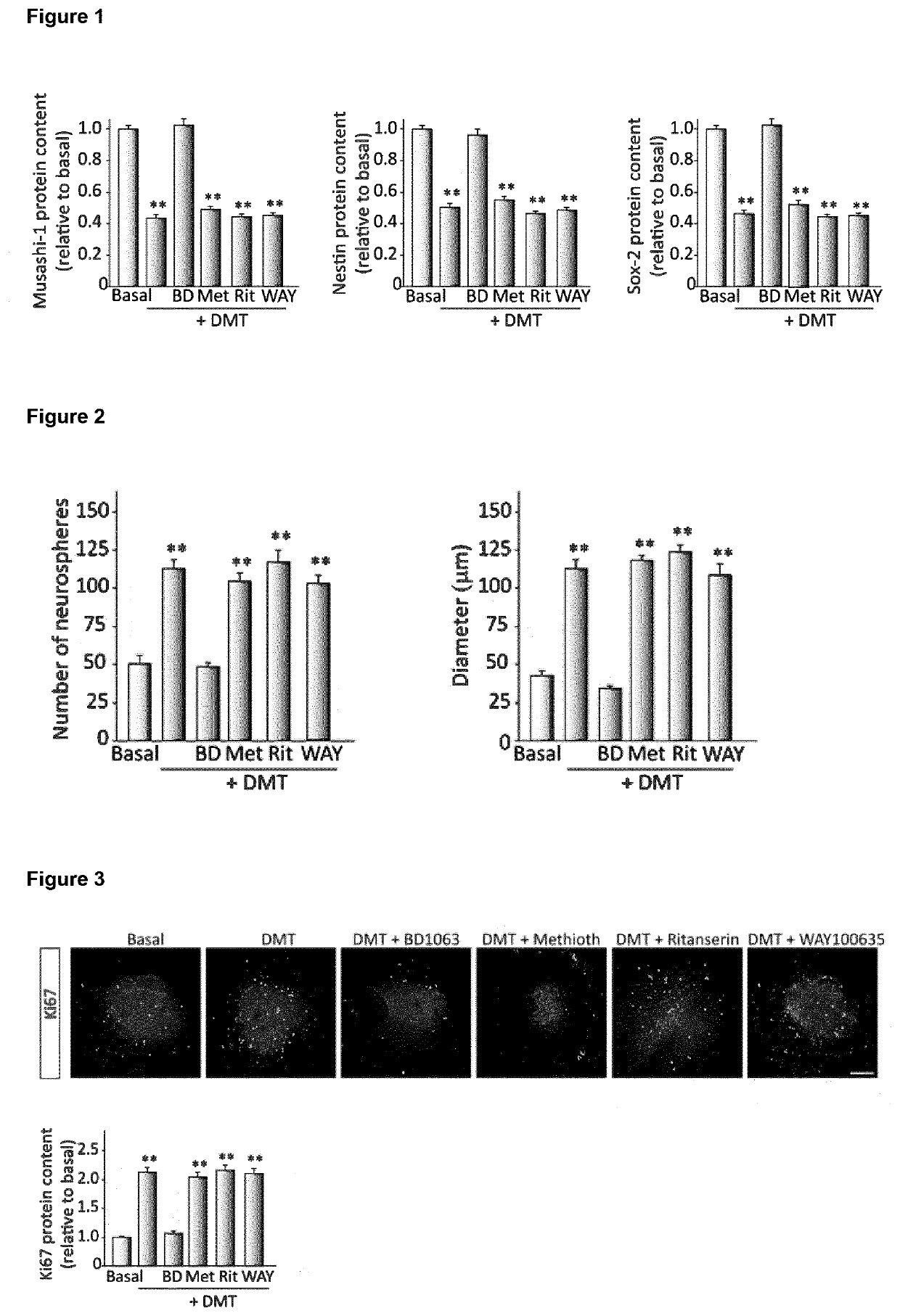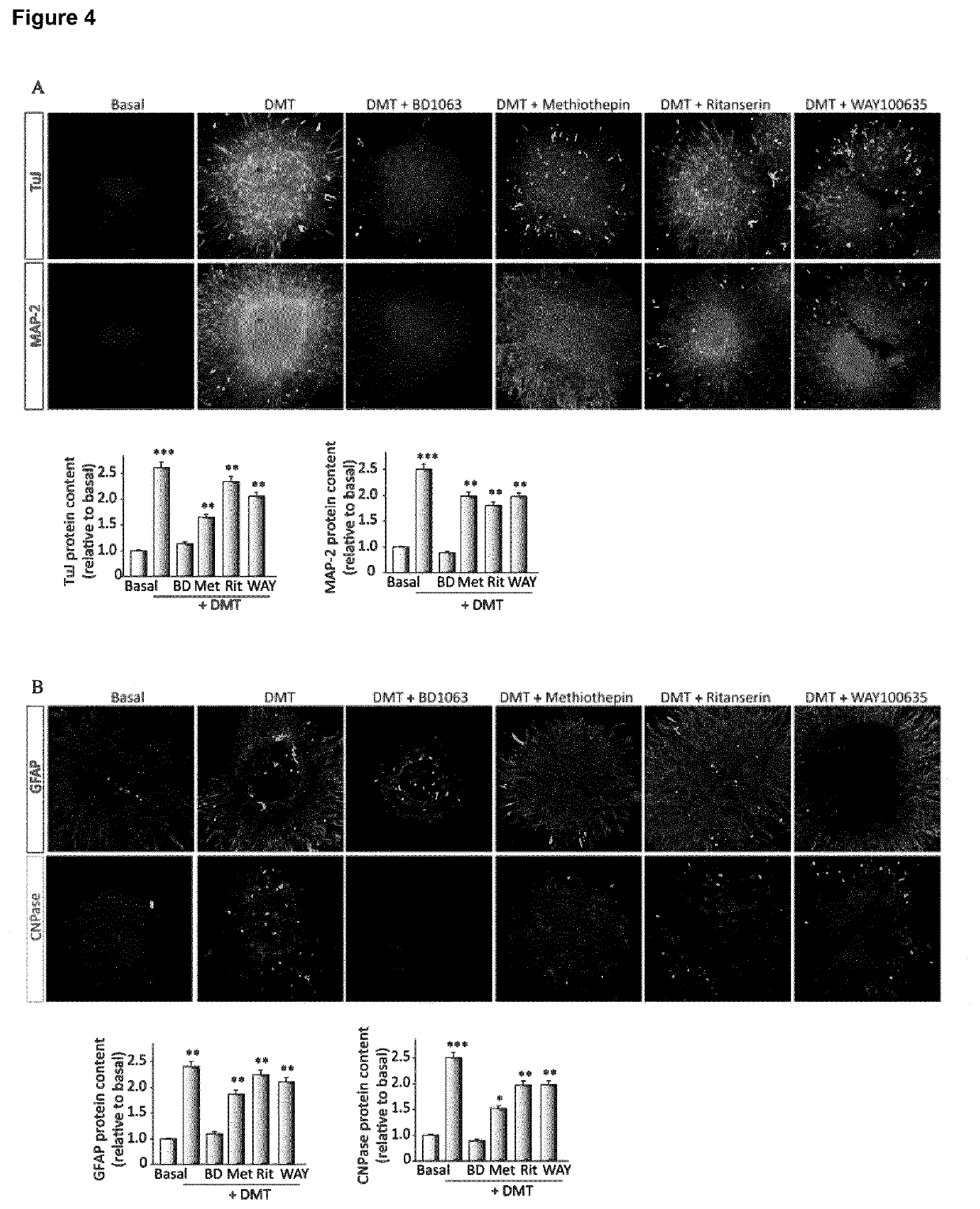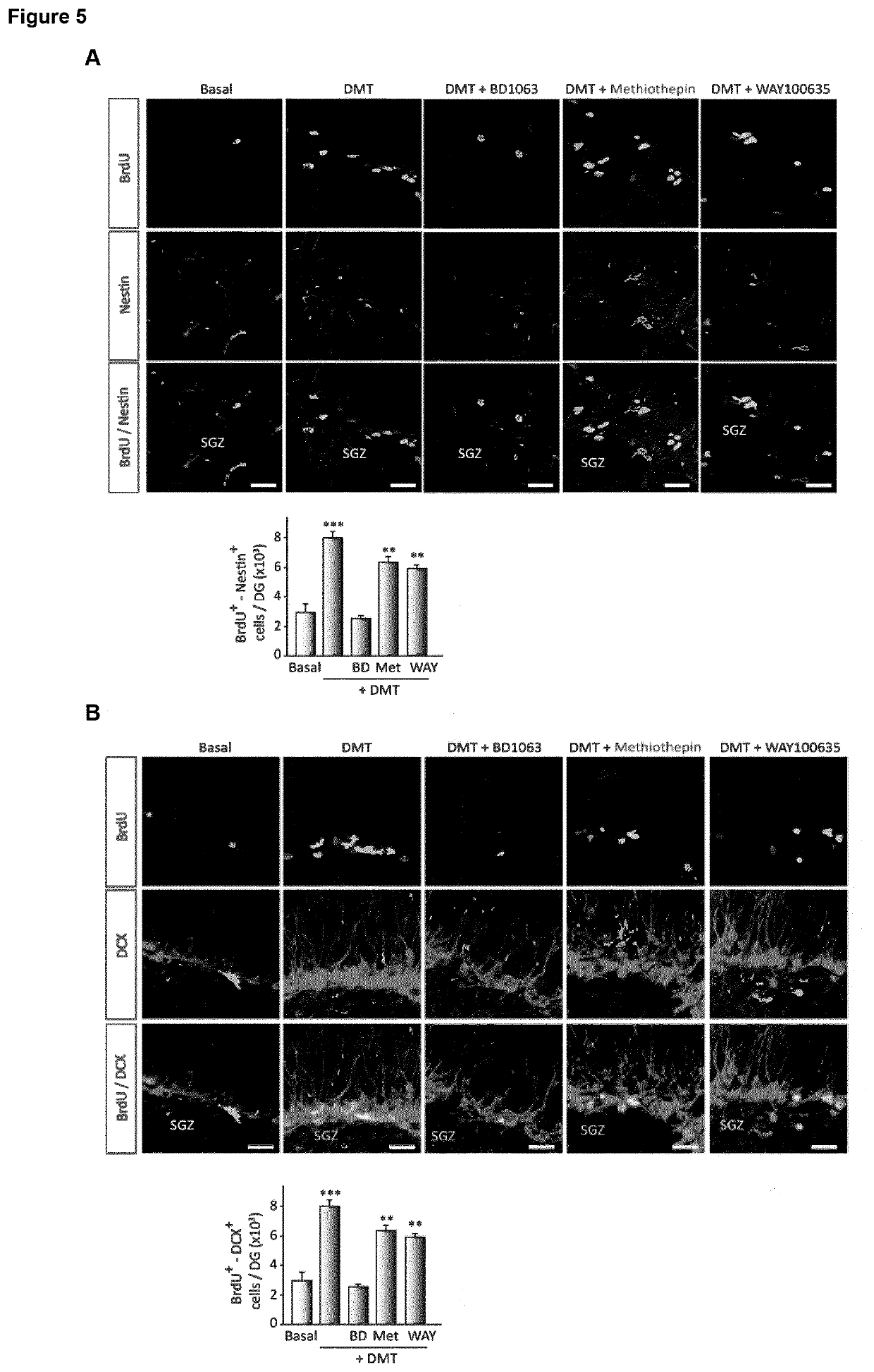Combination product for the treatment of neurological and/or psychiatric disorders
a combination product and neurological and/or psychiatric disorder technology, applied in the direction of drug compositions, medical preparations, nervous disorders, etc., can solve the problems of hallucinogenic or psychedelic side effects that constitute a serious limitation, the capacity of dmt to stimulate neurogenesis has not been assessed, and the documents do not disclose hallucinogenic or psychedelic tryptamine and a 5-ht2a receptor antagonist. to achieve the effect of preventing, allevia
- Summary
- Abstract
- Description
- Claims
- Application Information
AI Technical Summary
Benefits of technology
Problems solved by technology
Method used
Image
Examples
example 1
[0147] DMT reduces the undifferentiated state of neural stem cells via the Sigma-1 receptor. This effect is maintained in the presence of 5-HT2A antagonists.
[0148]Results from this example are shown in FIG. 1. Neural stem cells were established as primary cultures obtained from adult mice (2-3 month old) by isolation of the subgranular neurogenic niche and seeded into 6-well dishes at a density of ˜40,000 cells per cm2 in DMEM / F12 (1:1, Invitrogen) containing 10 ng / mL EGF, 10 ng / mL FGF and N2 medium (Gibco, Madrid, Spain). Neurospheres were treated under proliferative conditions (culture medium containing 10 ng / mL EGF and 10 ng / mL FGF (Gibco, Madrid, Spain)) with saline, DMT (1 μM) alone, DMT+Methiothepin (Met, a mixed 5-HT2A / 5-HT1A receptor antagonist; 1 μM), DMT+BD1063 (BD, a selective Sigma-1 receptor antagonist; 1 μM), DMT+Ritanserin (Rit, a selective 5-HT2A receptor antagonist, 1 μM) and DMT+WAY100635 (WAY, a selective 5-HT1A receptor antagonist, 1 μM) for 7 days. Methiothepin ...
example 3
[0157] DMT promotes neural stem cell proliferation via the Sigma-1 receptor. This effect is maintained in the presence of 5-HT2A antagonists.
[0158]Results from this example are shown in FIG. 3. Changes in the levels of protein Ki67, a marker of actively dividing cells, were assessed using: a) fluorescence immunodetection by means of immunocytochemistry analysis and a primary Ki67 antibody; and b) quantification of Ki67 protein levels by immunoblot analysis using the methodology described in Example 1. For the immunocytochemistry analysis, neurospheres grown on glass cover slides were fixed for 15 minutes at room temperature in 4% paraformaldehyde and then incubated at 37° C. for 1h with a primary antibody directed against ki67 (rabbit, Abcam). After several rinses in PBS, samples were incubated with an Alexa-488 goat anti-rabbit antibody (Molecular Probes, Madrid, Spain) for 45 min at 37° C. Staining of cell nuclei was performed using 4′,6-diamidino-2-phenylindole (DAPI). Finally, i...
PUM
| Property | Measurement | Unit |
|---|---|---|
| density | aaaaa | aaaaa |
| temperature | aaaaa | aaaaa |
| wavelength | aaaaa | aaaaa |
Abstract
Description
Claims
Application Information
 Login to View More
Login to View More - R&D
- Intellectual Property
- Life Sciences
- Materials
- Tech Scout
- Unparalleled Data Quality
- Higher Quality Content
- 60% Fewer Hallucinations
Browse by: Latest US Patents, China's latest patents, Technical Efficacy Thesaurus, Application Domain, Technology Topic, Popular Technical Reports.
© 2025 PatSnap. All rights reserved.Legal|Privacy policy|Modern Slavery Act Transparency Statement|Sitemap|About US| Contact US: help@patsnap.com



